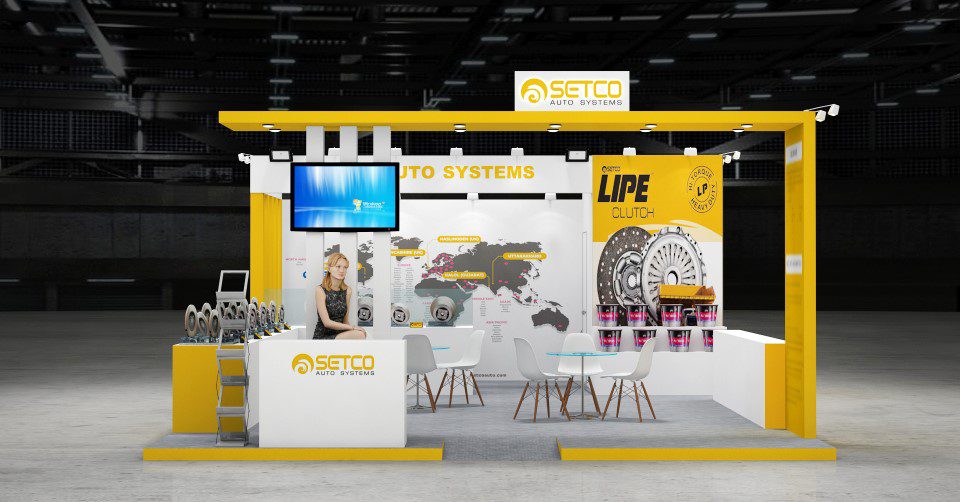
3D Exhibition Stall Design: Transforming Ideas into Impactful Brand Experiences
In today’s competitive exhibition landscape, your stall is not just a space—it’s your brand’s stage. Every visitor who walks into an exhibition hall is exposed to countless stalls, but only those with a distinct design and engaging experience stand out. 3D exhibition stall design has emerged as the ultimate solution for businesses that want to combine creativity, technology, and strategy into one seamless presentation. From planning to fabrication, every step matters in delivering a stall that communicates the brand message while ensuring maximum visitor engagement.
3D Stall Solution Summary
The success of a stall starts with a well-defined design solution. A 3D stall design provides a realistic visualization of how the final structure will look, making it easier to align stakeholders, finalize concepts, and make revisions early in the process. This solution focuses on:
- Optimal Space Utilization – Ensuring every inch of the stall delivers value.
- Brand Messaging – Integrating graphics, signage, and digital screens that narrate the brand story.
- Functionality – Designing spaces for product displays, client discussions, and interactive elements.
By offering a virtual walkthrough, a 3D stall solution helps brands preview layouts, lighting, and placements before committing to fabrication, saving both time and cost.
3D Stall Execution and Installation
Once the design is approved, execution and installation bring the concept to life. This stage requires precision, time management, and expertise. Skilled teams handle logistics, transportation, on-site assembly, and finishing. The process typically includes:
- Pre-fabrication of components for quick installation.
- On-site assembly with safety protocols.
- Installation of lighting, digital screens, and interactive features.
- Final quality checks before the exhibition opens.
A smooth execution ensures that the stall is delivered on schedule and stands ready to captivate audiences from the very first moment.
Fabrication Procedure – Quality Redefined
The heart of any exhibition stall lies in fabrication quality. Premium materials and precision engineering define how long the stall lasts and how effectively it represents the brand. A redefined fabrication procedure includes:
- Material Selection – Using durable and lightweight options like MDF, ply, metal, acrylic, and vinyl graphics.
- Cutting & Shaping – Laser cutting and CNC machining for flawless finishes.
- Brand Graphics – High-resolution printing and signage that align with the design theme.
- Assembly Precision – Welding, framing, and modular joins that allow quick setup and dismantling.
By focusing on quality at every stage, the final stall not only looks premium but also ensures structural stability and durability throughout the event.
Engagement and Interaction
- The modern exhibition stall is more than a display—it’s an experience hub. A well-designed stall fosters two-way communication between the brand and visitors. Key elements that boost engagement include:
- Interactive Digital Displays – Touchscreens, AR/VR experiences, or product demos.
- Seating & Discussion Zones – Comfortable spaces for meaningful business conversations.
- Visual Storytelling – Use of LED walls, lightboxes, and impactful graphics to grab attention.
- Giveaway & Activity Zones – Encouraging participation through contests, sampling, or gamification.
When visitors interact with your stall, they build stronger connections with your brand, increasing recall and conversion potential.
3D Model of the Plan, Brand Message, and Space Optimization
One of the strongest advantages of 3D exhibition stall design is the ability to visualize the entire plan before execution. This step allows businesses to:
- Test multiple design options and select the best one.
- Ensure brand message integration with graphics, signage, and props.
- Optimize visitor movement flow to avoid congestion.
- Allocate zones for product display, live demo, branding, and hospitality.
The 3D model ensures clarity, eliminates last-minute surprises, and enhances confidence in the final output.
Prioritize Project Requirements for Outsourcing
Outsourcing stall design and fabrication is a common practice—but success depends on clarity. Brands must prioritize their requirements before choosing a partner. Key considerations include:
- Budget and Timeline – Setting realistic expectations for design and execution.
- Design Needs – Detailing stall dimensions, graphics, and interactive elements.
- Material & Finish Preferences – Communicating quality standards upfront.
- Compliance and Safety – Ensuring the stall meets event organizer guidelines.
By sharing a clear project brief, brands ensure smooth collaboration and higher success rates with outsourcing partners.
Conclusion
A 3D exhibition stall design is more than a construction project—it’s a brand storytelling tool. From concept to fabrication and installation, every detail matters in creating a space that attracts, engages, and converts. By prioritizing project requirements, leveraging 3D visualization, and focusing on quality execution, brands can transform their exhibition presence into a powerful marketing asset.
At Taksha Global, we believe that a successful stall does not just look good—it works smart, delivers measurable value, and leaves a lasting impression on every visitor. With our expertise in 3D exhibition stall design, fabrication, and end-to-end execution, we ensure that your brand’s presence is not only eye-catching but also strategically aligned with your business goals.


